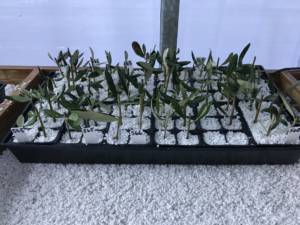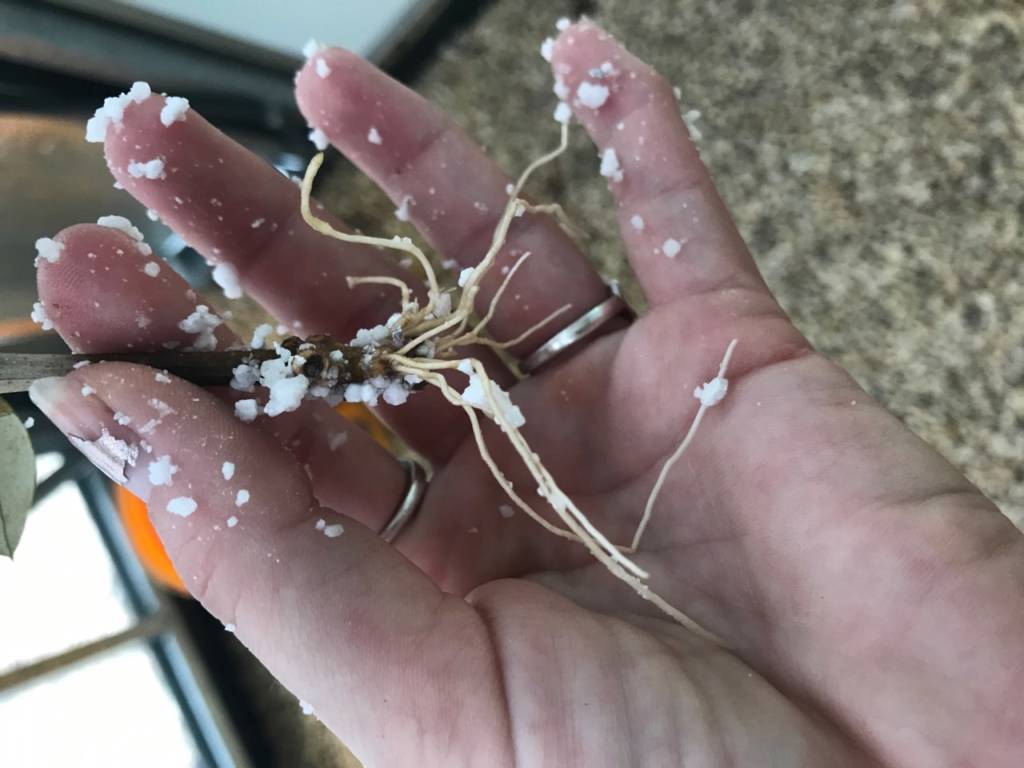Cultural Practices in Rooting Olive Trees
Plant response to rooting hormones varies with each species, but before rooting hormones are introduced, growers should implement a few simple cultural practices to reduce the number of propagation challenges. Cuttings, whether they are grown from on-site or off-shore stock plants, should be thoroughly inspected before planting. Softwood cuttings that have an actively growing shoot tip should be selected. Tissues that are too young or too old will root more slowly than cuttings that are at the proper stage of maturity. Cuttings that are too old also tend not to branch as well as younger, softer tissue. Therefore, it is important to visually inspect the lower portion of the cutting to check for woody tissue that is brown or grayish-brown in color. Cuttings that exhibit this hardwood tissue may need to be trimmed closer to the shoot tip. Fully developed flowers on cuttings are sometimes another sign that tissue may be too old to root optimally. Mist and light levels should be regulated appropriately, if the propagation medium is too saturated (low oxygen) or light levels are too intense, rooting is inhibited. Ref: Christopher Cerveny and James Gibson
In the photo below, roots appear on a North African variety at Florida Olive Council Research Facility-2018.


We need your help.
The Florida Olive Council is a non-profit organization certified under Federal tax code 501(c)(3) and Florida statutes Chapter 617. We are supported by your contributions. Ninety-five (95%) of your donation goes directly to supporting olive research. Our directors and officers receive no salary or other compensation. Donate
